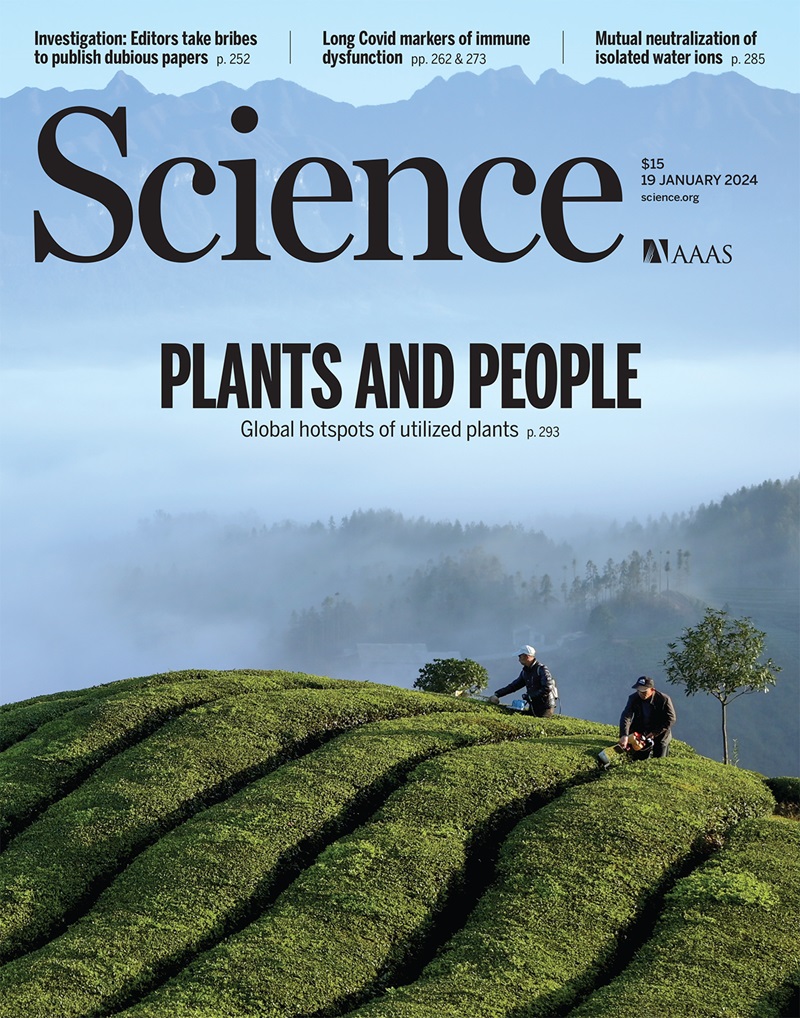慢地震和大地震交汇的地方
IF 45.8
1区 综合性期刊
Q1 MULTIDISCIPLINARY SCIENCES
引用次数: 0
摘要
南开海沟是日本东南海岸外长达900公里的海沟,有发生大地震和海啸的巨大风险。在这个位置,菲律宾海板块在欧亚板块下方滑动,沿着板块相互滑动的表面(断裂面)形成巨大的应变。当锁定(停止)断层面上的累积应力在大范围内接近临界强度时,就会触发大地震。造成这种情况的一个潜在因素可能是岩石沿着断裂面缓慢移动。这种持续数天至数年的缓慢地震发生在一个被锁定的断裂面附近。Edgington et al.(2)和Ozawa et al.(3)分别在本期1396页和1401页报道了南开海槽慢震和大震之间的联系。这些发现指出了在评估地震危害时考虑慢震的重要性。本文章由计算机程序翻译,如有差异,请以英文原文为准。
Where slow and large earthquakes meet
The Nankai Trough—a 900-km-long trench off the southeast coast of Japan—bears great risk for large earthquakes and tsunamis. In this location, the Philippine Sea Plate is sliding beneath the Eurasia Plate, building immense strain along the surface where the plates slip past each other (the fault plane). Large earthquakes are triggered when the accumulated stress on the locked (halted) fault plane approaches a critical strength over a wide area. A potential contributing factor to this scenario could be slow movement of rocks along the fault plane. Such slow earthquakes, lasting days to years, have taken place adjacent to a locked fault plane (1). On pages 1396 and 1401 of this issue, Edgington et al. (2) and Ozawa et al. (3), respectively, report a connection between slow earthquakes and large earthquakes in the Nankai Trough. The findings point to the importance of considering slow earthquakes when assessing seismic hazards.
求助全文
通过发布文献求助,成功后即可免费获取论文全文。
去求助
来源期刊

Science
综合性期刊-综合性期刊
CiteScore
61.10
自引率
0.90%
发文量
0
审稿时长
2.1 months
期刊介绍:
Science is a leading outlet for scientific news, commentary, and cutting-edge research. Through its print and online incarnations, Science reaches an estimated worldwide readership of more than one million. Science’s authorship is global too, and its articles consistently rank among the world's most cited research.
Science serves as a forum for discussion of important issues related to the advancement of science by publishing material on which a consensus has been reached as well as including the presentation of minority or conflicting points of view. Accordingly, all articles published in Science—including editorials, news and comment, and book reviews—are signed and reflect the individual views of the authors and not official points of view adopted by AAAS or the institutions with which the authors are affiliated.
Science seeks to publish those papers that are most influential in their fields or across fields and that will significantly advance scientific understanding. Selected papers should present novel and broadly important data, syntheses, or concepts. They should merit recognition by the wider scientific community and general public provided by publication in Science, beyond that provided by specialty journals. Science welcomes submissions from all fields of science and from any source. The editors are committed to the prompt evaluation and publication of submitted papers while upholding high standards that support reproducibility of published research. Science is published weekly; selected papers are published online ahead of print.
 求助内容:
求助内容: 应助结果提醒方式:
应助结果提醒方式:


